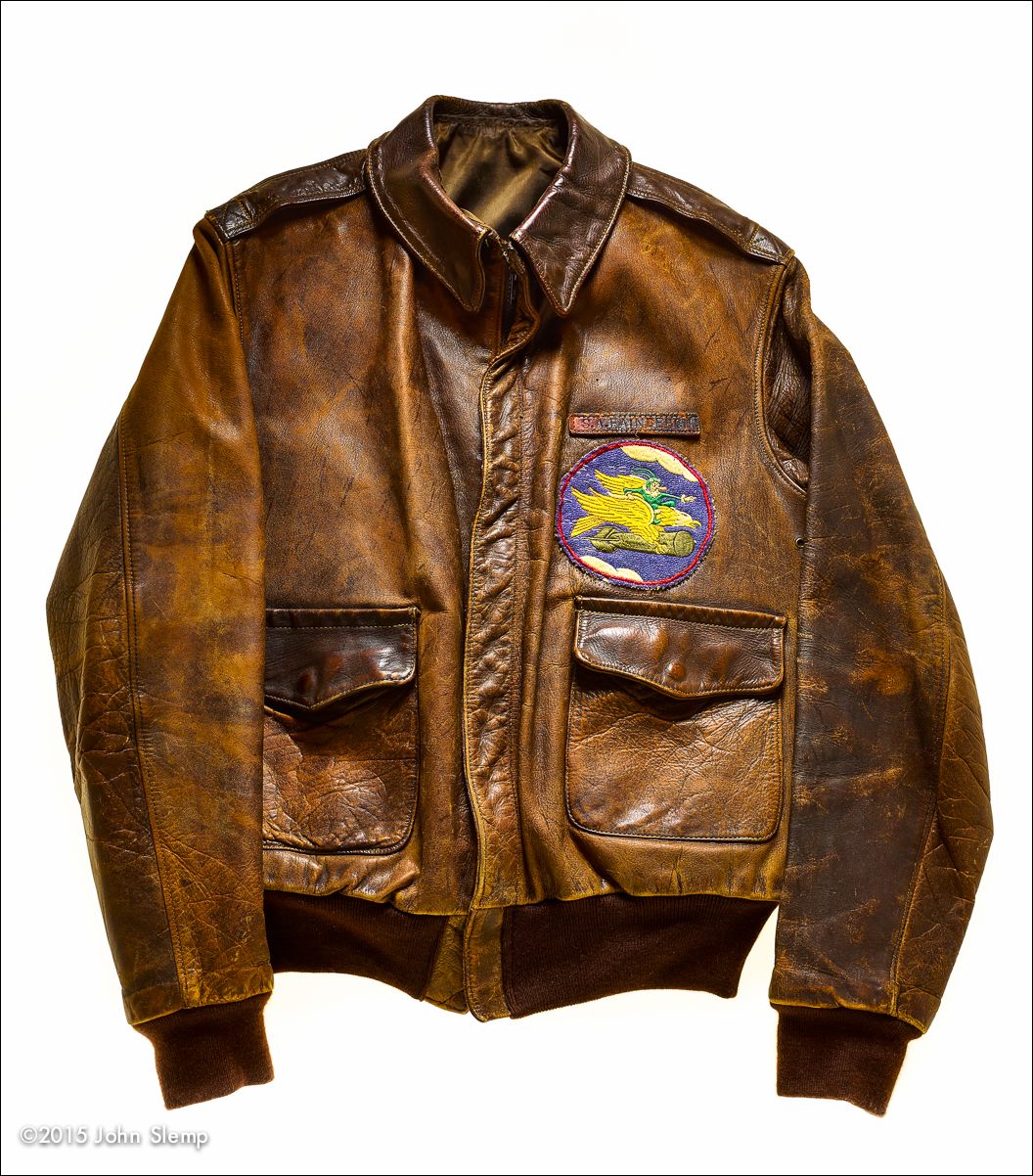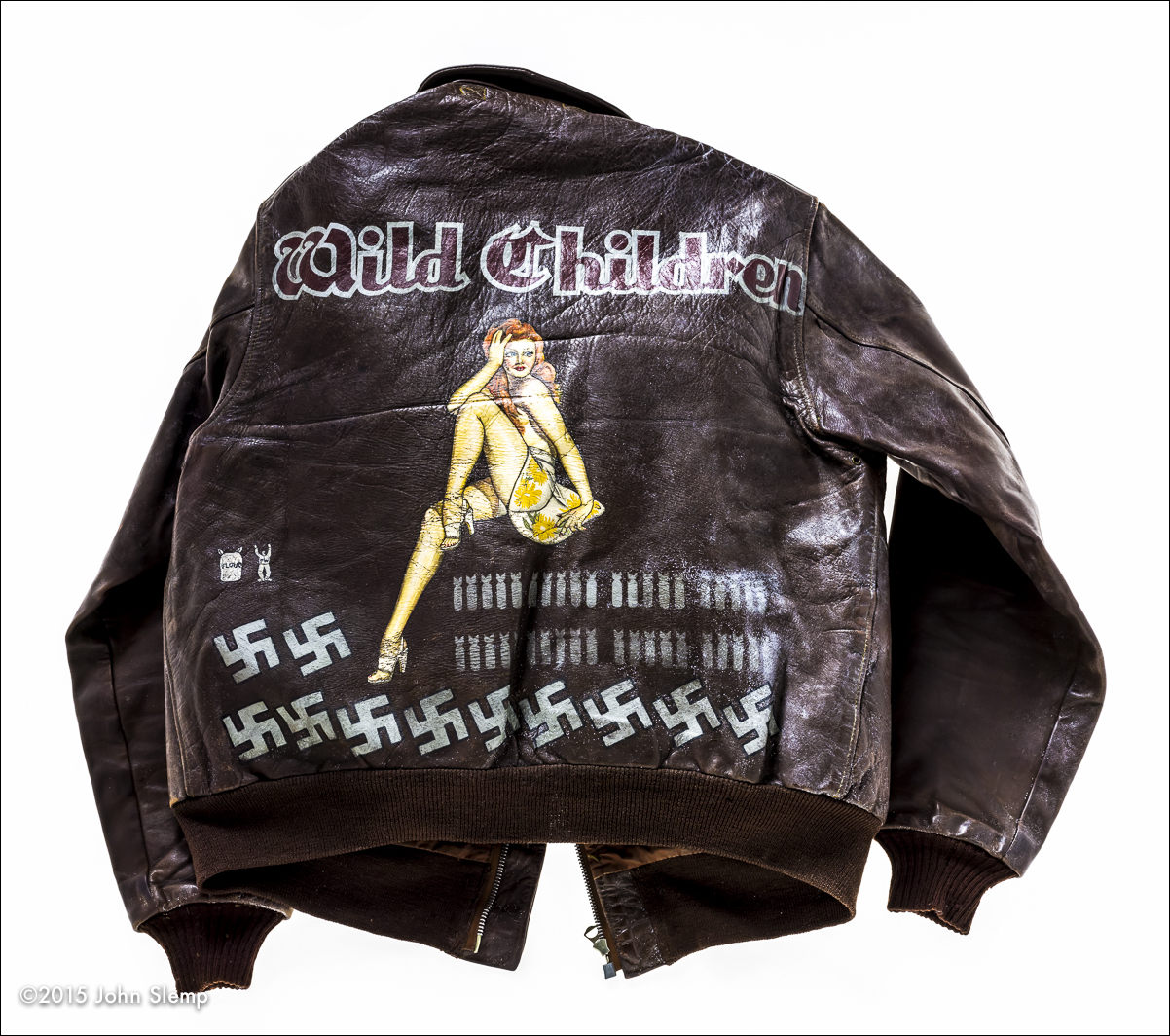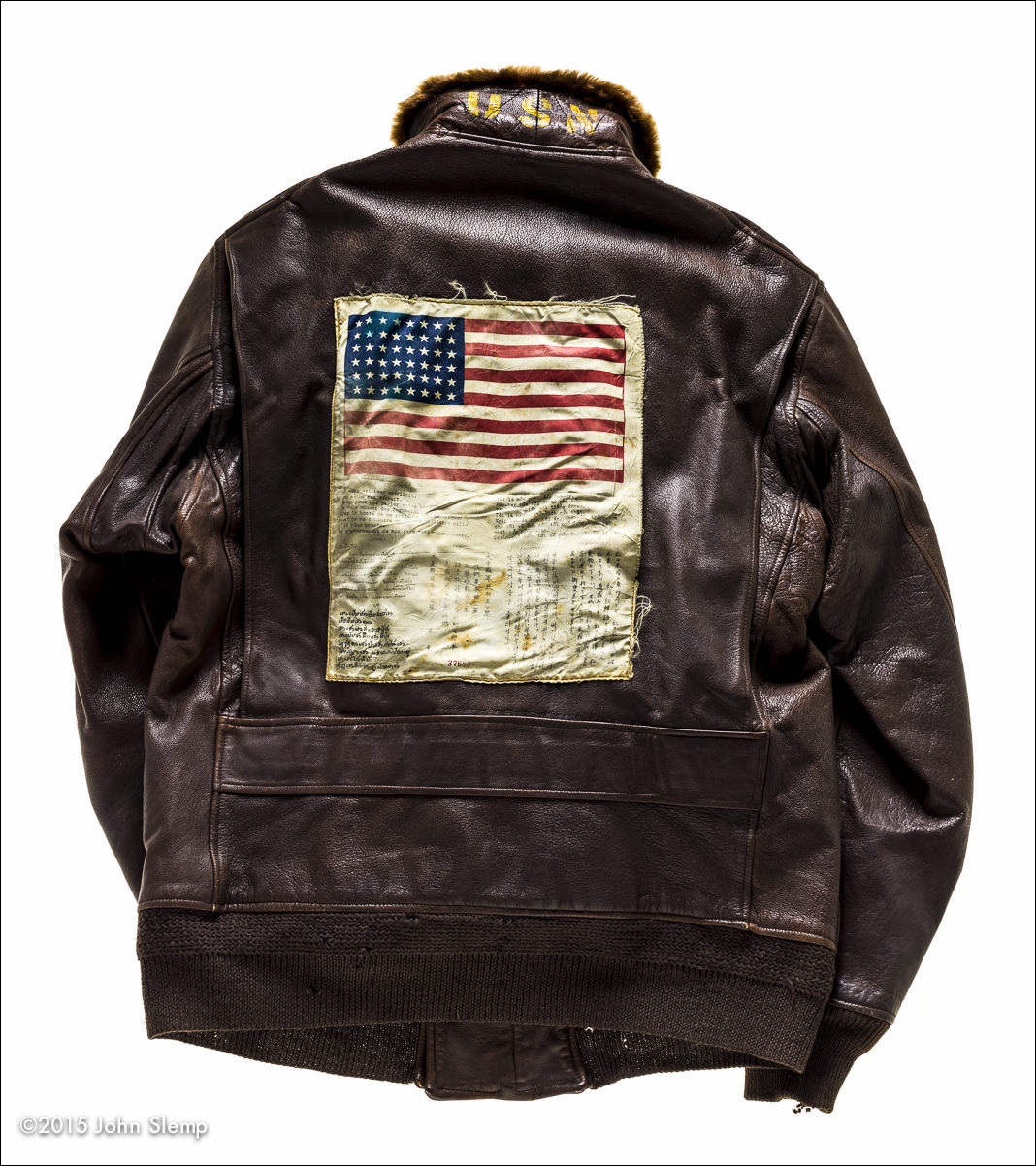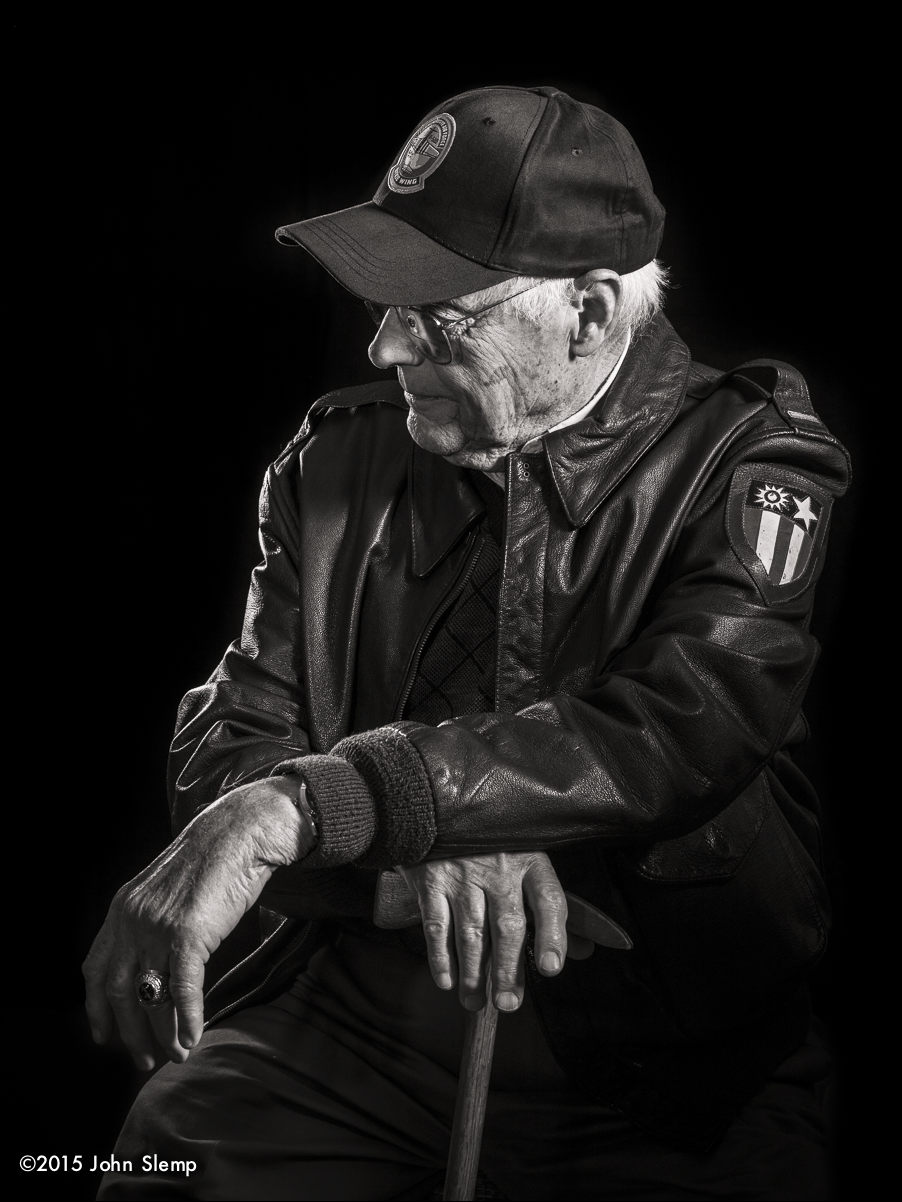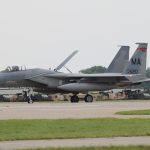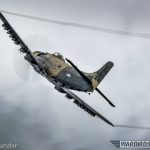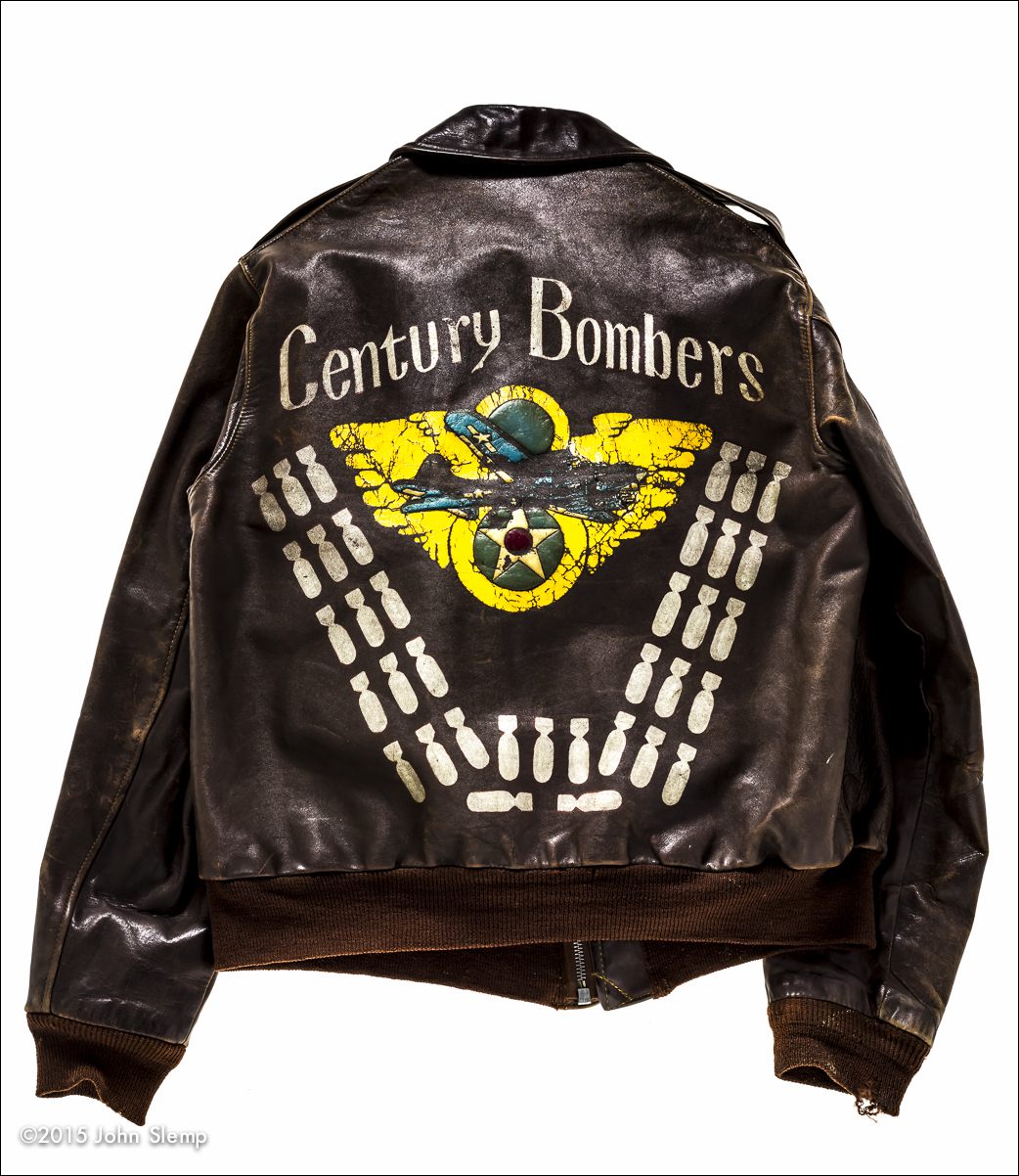
Author and photographer John Slemp is seeking WWII bomber jackets to preserve their history and artistry in an upcoming book. Mr. Slemp’s Bomber Jacket Project has already photographed and chronicled the history of several dozen WWII jackets. While mainly focused on the Army Air Corp A-2 and the Navy/Marine G-1 flight jackets, the project is seeking any WWII military jackets that feature original artwork (on front and/or back) and the stories that go with them. Additionally, any contact with veterans that wore such jackets is appreciated (especially veterans who flew combat in their A-2 or G-1 jacket). WWII veterans are disappearing at an alarming rate and their stories need to be collected and preserved before it’s too late. Such is the goal of Mr. Slemp’s bomber jacket project; to tell those stories in prose and photographs.
Many such prized jackets long-ago became separated from their original owners. The lucky ones have made their way into the hands of collectors or museums for proper preservation and, sometimes, display. They’ve become highly desirable collectables to all manner of collector, from history buffs, to folk art aficionados, to fashion gurus. Hundreds (maybe thousands) are undoubtedly treasured family heirlooms, stored away for safe keeping. Unfortunately, those are the ones that rarely see the light of day. Regardless of where they are now, Slemp is interested in hearing of them for possible inclusion in his project. Jackets who’s veteran still survives are the most desirable of all, as the artwork and the veterans memories/stories are forever linked and such jackets and tales will take center stage within the book.
Along with electrically heated flight suits, the bomber jackets were sometime also worn, and served the vital purpose of protecting bomber crews from the sub-zero temperatures common on long, high-altitude, bombing missions. With the exception of B-29 crews, Allied bomber crews operated in all combat zones of WWII in unpressurized, poorly heated bombers. The heavy bombers often flew missions well in excess of 10 hours in sub-zero conditions. Even medium and small bomber crews counted on their A-2’s or G-1’s to shield them as they manned machine guns at open waist windows and inside unheated turrets, as the frigid slipsteam bathed them with windchill temperatures most of us have never experienced.
The “blood chit” on the back of the jacket was a billboard, written in many of the SE Asian languages, basically advising locals that the wearer was an American serviceman. If aided with food and shelter, and safely returned to allied lines, there would be a reward for their efforts. Notice the “USN” on the collar. This G-1 belongs to the National Naval Aviation Museum collection in Pensacola, Florida.
Yet, the true mystique of the bomber jacket lies not it in functional purpose. The life expectancy of a crewman was often measured in days or weeks, rather than years, and the jackets became a canvas on which to express all manner of angst, pride, bravado, and titillation. Like the aircraft nose-art of the time, bomber jacket adornment, while not officially permissible, was tolerated for its morale-boosting qualities (with only the more brash cases of “obscenity” being censored by military leaders). By war’s end, even to a greater extent than aircraft nose-art, the variety of ornamentation applied to bomber jackets had reached truly impressive levels. They chronicled missions flown, enemy aircraft downed, and warriors lost. But, they also displayed reminders, personal messages, and images designed to invoke thoughts of home. Such thoughts were often just enough to get their wearer through one more mission, one more injury, one more day at war…and one day closer to leaving the hell of war for the warm embrace of home.
Highly disappointed, he said it was the best aircraft he ever flew. He safely evaded capture and arrived back home in Americus, Georgia on Christmas Eve, 1945. He lives in Atlanta today.
John Slemp is a self-proclaimed “Army Brat” with a chronic case of wanderlust and a love of both history and photography. Traveling globally and living abroad have provided Mr. Slemp with unique opportunities to visit all manner of historical places and events and to having his written and photographic work recognized far and wide. When not traveling, Mr. Slemp resides outside Atlanta, GA, where work on his WWII bomber jacket book project is well underway. If you have or know of a bomber jacket or veteran who wore one that you believe should be included in the Bomber Jacket Project, please contact Mr. Slemp at (404) 245-2411 or via email at [email protected]. Read more on the Bomber Jacket Project at www.aerographs.com.
————————————————————————————————————————————–
About The Author: Matthew McDaniel is a Master & Gold Seal CFII, ATP, MEI, AGI, & IGI and Platinum CSIP. In 26 years of flying, he has logged 16,000 hours total and over 5,500 hours of instruction-given. Currently, he flies the Airbus A-320 series for an international airline, holds eight turbine aircraft type ratings, and has flown over 80 aircraft types. Matt is one of 25 instructors in the world to have earned the Master CFI designation for 7 consecutive two-year terms. He’s been a freelance aviation author since 2003 and owns Progressive Aviation Services, LLC (www.progaviation.com). He can be reached at: [email protected] or 414-339-4990.
Copyright 2016, Matthew McDaniel.
First publication rights granted WarbirdsNews. All other rights reserved by copyright holder.








